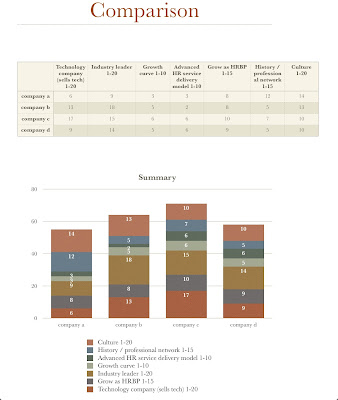Job Choice Tool
Kahneman describes two different systems in play in the human decision making process.
System 1 is automatic and unconscious and is sometimes called the implicit system, the experiential system, the associative system, or the heuristic system.
System 2, sometimes called the explicit system, the rule-based system, the rational system, or the analytic system, performs slower, sequential thinking. This system permits the abstract hypothetical thinking that is not permitted in System 1. It is known as the rational system because it reasons according to logical standards. It tends to be rule-based, analytic, controlled, demanding of cognitive capacity, and slow.
Although repeated practice and experience can move complex decision making into System 1, System 2 is the most reliable place validate a decision.
I was thinking about this recently when assisting a "friend" with a career decision. His gut instinct was clear but in order to avoid making a life changing decision based on an emotional reaction, I put together a small tool to move the decision making into System 2 -- and make it more reliable. I have removed the company names, because they are irrelevant, but I have retained the other specifics, to illustrate how the tool works. The person in question is a mid-career HR professional.
Along the side, you can see there were several companies the candidate was considering, including the incumbent organization. Along the top were the key features that mattered most to this individual. (Obviously, these would be different for different people, in different fields of work, at different points in their career, etc.)
Each is scored, but weighted by having a larger or smaller scale of values, based on their importance to the individual in question. Each aspect of each company was scored by the candidate, based on knowledge gained from discussions with current and recent employees, with generally available public knowledge (annual reports, analysts' reports, etc), as well as with the candidate's own thorough discussions with people at each company.
It was easy to tweak a particular value and see how that impacted the overall scoring. And at the end of the fiddling, it became clear, given all the available data and the relative importance of each characteristic to the candidate, which company & job was the best fit.
Companies often use a similar kind of process for matching individual's with jobs, making re-org decisions, or in preparing for workforce planning actions like downsizing or hiring. In such an instance, the left column becomes a list of all the possible candidates/existing employees, and the top row becomes a list of the key skills needed for the role being filled. And the scores reflect how well the people being evaluated demonstrate those skills -- ie, what the disposition of each person should be.
If candidates make use of a tool like this, in their own decision making processes, they can gain increased insight into what matters most to them and how that aligns with the options they have available. This will increase the quality of their decision making, boost their confidence in the process, and materially impact the long term positive outcome of their choices.
